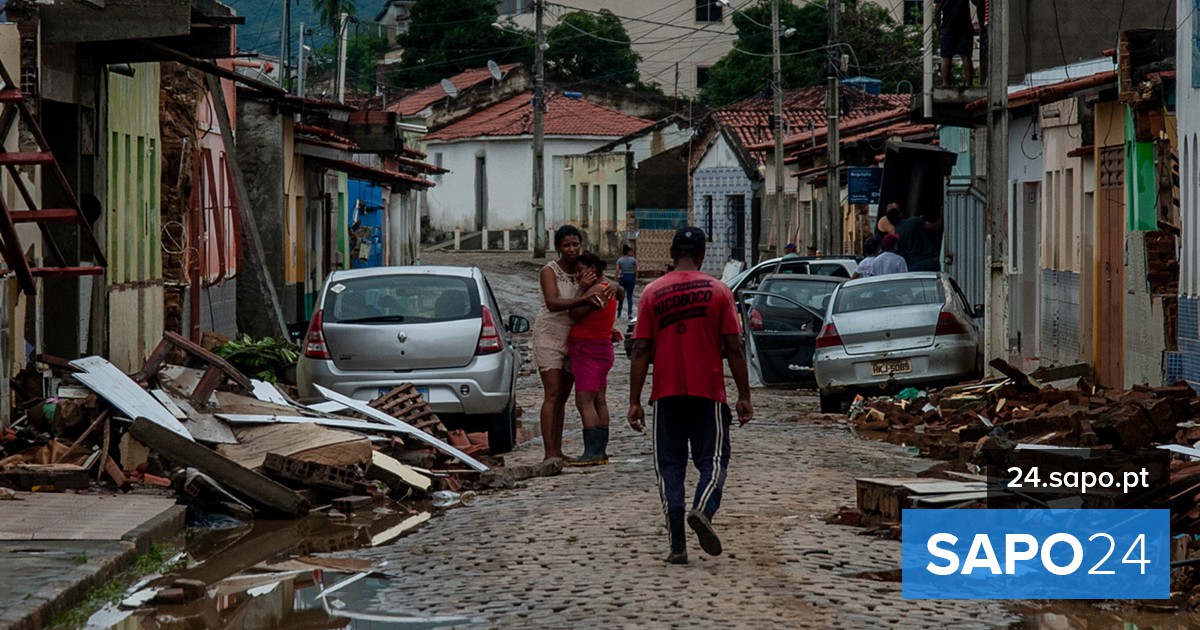“Unfortunately, we are living in the largest disaster ever in Bahia’s history,” Bahia Governor Rui Costa announced Monday, who is overseeing the joint operation that was put into place on Saturday with the federal government and other states in the affected areas. ..
Dramatic scenes of flooded homes and streets turned into real rivers were repeated in the municipalities in the south of the state, which have been hit since Thursday by torrential rains that caused dams to burst and rivers to overflow at the weekend.
In Itapetinga, Idalicio dos Santos moved across the water between treetops in a small boat. “Today I have done this way at least twenty times, taking and bringing people,” he said.
AFP aerial photos of that municipality show three men paddling as they lie on an inflatable mattress face down, surrounded by houses with water reaching windows.
In nearby Itambe, resident Teola Almeida helped her mother rescue the few belongings that had not given up in the water. In some homes [a água] Its height reached 1.80 meters. I revealed that my mother’s house was about 1.40m in length, and was standing in front of a mountain of rubble.
The state’s latest displaced numbers nearly doubled on the balance sheet on Sunday: 62,796 people have had to leave their homes, more than half of whom need shelter, according to the Civil Defense and Protection Authority (Sudec).
In addition to the nearly two dozen deaths since the beginning of November due to rains in the state, 358 injured have been recorded so far. It is estimated that a total of 471,009 people were affected by the greater volume of rain resulting from the climatic “La Niña” phenomenon, which adds to the exceptional rainfall in a short period of time, according to specialists.
The number of affected municipalities has risen to 116, with at least 100 municipalities in a worrying situation, double the number recorded on Sunday, according to Sudec.
The city of Itapuna, where the last two deaths were recorded, suffered from the rise of the Cachoeira River. One of the dead, a young man of 21 years old, was swept away by the current; The other, a 33-year-old woman, died of a landslide, according to the state’s latest state report on Monday afternoon.
Trying to bring hope to the region, Governor Rui Costa said, “The waters at the head of the Cachoeira River are starting to drop. Even if it’s slow, the outlook is improving in the coming days.”
The governor announced social assistance for affected families, without elaborating, and special interest-free credits for merchants. The federal government has provided 20 million reais to flood victims, Citizenship Minister Joao Roma has reported.
Estael Sias, a MetSul meteorologist, said there was “a correlation” between the intensity of precipitation in the northeast and the La Niña phenomenon, which causes precipitation at higher than normal levels.
The aggravating factor is that the storm in recent days has joined the rain that swept the area a few weeks ago.
“There was a catastrophic scenario,” Seys said. It already rained heavily in November in Bahia and now it is raining again in an area that has not yet recovered from this excess of rain.”
In the past few hours, some municipalities have received an amount of water equivalent to an entire month. The capital, Salvador, for example, increased its historical average of 58 mm for the month of December fivefold through Friday, according to the city’s civil defense.

“Hardcore alcohol maven. Hipster-friendly analyst. Introvert. Devoted social media advocate.”

